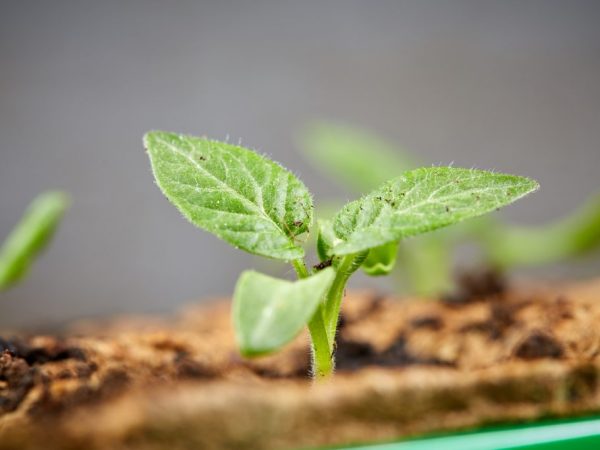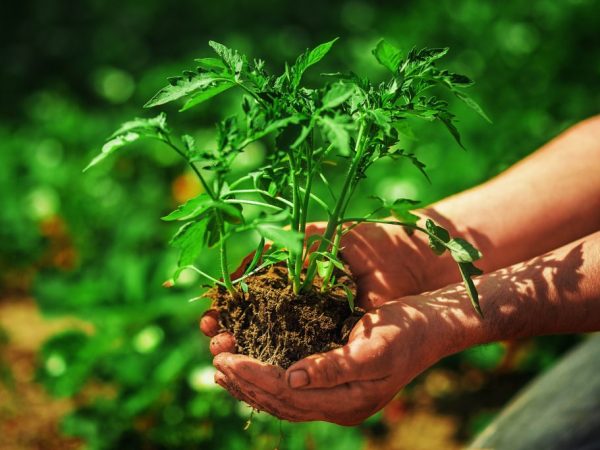Growing tomato seedlings according to the Ganichkina method
There are many methods for growing healthy and robust seedlings. Seedling tomatoes according to Ganichkina is a technique that allows you to achieve high yields of any crop.

Growing tomato seedlings according to the Ganichkina method
Acquaintance with Ganichkina
Oktyabrina Ganichkina hosts most of the TV programs dedicated to gardening and horticulture. Oktyabrina received her Ph.D. in agricultural sciences and wrote a large number of works devoted to the cultivation of seedlings of vegetables and fruits. Her advice is especially popular even among professional gardeners.
She has her own Youtube channel, where she talks about the methods of growing crops and shows the principle of work. Thanks to the advice of this woman, beginners in the field of agriculture were able to learn all the intricacies of agricultural technology and the principles of crop cultivation.
Planting seeds
Most gardeners prefer purchased seedlings, but home-grown seedlings are much healthier and of better quality.
Disinfection
First of all, seeds are disinfected. For these purposes, universal preparations (Epin and Energen) are used, which not only disinfect the planting material, but also stimulate its growth. The seeds are soaked in a similar solution for about 24 hours. After that, they are wrapped in a plastic bag and placed in the refrigerator for several hours.
Sowing dates
Sowing seeds at home is done, depending on the cultivated variety.
- If it is decided to plant low-growing crops, sowing is done in April. After 30 days, seedlings appear, and after 60 days they are planted in open ground or a greenhouse.
- Seeds of late-ripening crops are sown in March. After 40 days, seedlings appear, and after 70 days, seedlings can be planted.
Tatiana Orlova (Candidate of Agricultural Sciences):
Tomato seeds germinate and sprout on average 5-7 days. 15-20 days after the emergence of seedlings, they dive.
Landing rules
Sowing seeds is carried out in plastic cups. Disposable containers are ideal. Each seed is placed in its own glass so that the tomatoes do not shade each other and do not overlap with the root system, because this slows down their growth. The sowing depth should not exceed 3 cm.
For quick germination of seeds, O. Ganichkina recommends covering the glasses with foil and placing them in a well-lit place (windowsill or balcony).
At home, you need to accurately regulate the temperature regime. Daytime temperature should not be lower than 20 ° С, at night it is forbidden to decrease indicators below 15 ° С. Temperatures around 30 ° C cause the seedlings to stop growing. As a result, flowers do not form or the plant stops growing, the root system cannot form correctly. As a result, the amount of yield decreases several times.
Tatiana Orlova (Candidate of Agricultural Sciences):
Immediately after the emergence of seedlings, the growing temperature is reduced by 5-7 degrees.This is done so that the seedlings do not stretch, because at high temperatures, only the aerial part of the tomato grows, and the root remains in its infancy.
Seedling preparation

Seedlings must be hardened
Seedlings of tomatoes according to Ganichkina's method must necessarily go through certain stages of preparation:
- Formation. As soon as the plant reaches 60 days, the first central bud is formed on it. It must be removed, otherwise other buds are unable to form. As a result, fruiting is minimal.
- Top dressing. Before planting in open ground or a greenhouse, seedlings must be fed. For these purposes, nitrogen nitrate is used, which allows you to speed up the process of root formation. As a result, the plant is more quickly taken up by the soil.
- Hardening. The hardening process is that the seedlings are taken outside a week before planting in a permanent place. For the first 2 days, she should be outside for no more than 3 hours. After that, the time spent on the street is gradually increased until it reaches 8 hours a day. Tempering is necessary so that the plant does not experience stress when planted in an open field or greenhouse.
Disembarkation process
Preference should be given to light and nutritious soils. In loamy and clayey places, fruiting occurs late. Choose areas with constant sunlight and draft protection.
The plant should not be planted in a permanent place very early: this will lead to a slowdown in growth, as a result, the seedlings will not take root well in the soil. Determinant tomatoes are planted in a greenhouse or open field at the age of 60 days. Indeterminate tomatoes are planted when they are 70 days old.
Planting dates depend on the climate of the region. If you plant tomatoes in an unheated greenhouse in early May, the plant will be much healthier and more fruitful. In open ground, planting is carried out on the 20th of May. The plant must be at least 25 cm high, otherwise it will not be able to undergo acclimatization.
When planting, you should also remember about the correct scheme: between the rows, a distance of 60 cm should be maintained, between the holes - about 70 cm.
Care rules
The rules of care are sufficient illumination, optimal temperature conditions and fertilizers.
- The daytime ambient temperature should not be lower than 18 ° C. If there is a change in the weather and the temperature has dropped, the planting area is covered with plastic wrap. Protective measures are carried out until the ovaries begin to form. Only after this is the shelter removed.
- An important stage of care is watering. Ganichkina O. recommends watering only with boiled warm water. Water should not get on the leaves of tomatoes: this will lead to rotting of the leaves, therefore, watering is carried out only at the root.
- Top dressing is carried out immediately after the appearance of the first leaf. The first 3 weeks of feeding is carried out only with mineral fertilizers. For the correct growth and strength of the main stem, the preparations Kornerost and Vegetta are used. 1 spoon of each substance is diluted in 5 liters of warm water, after which root feeding is carried out. After planting in a permanent place, mineral fertilizers (phosphorus, potassium and nitrogen) are alternated with organic substances (humus and bird droppings). With nitrogenous substances, you need to be careful not to burn the roots of the bush.
- It is important to learn how to tie up the bushes correctly and form them into 1-2 stems. A garter is necessary so that the plant does not break under the influence of large fruits. They begin to tie up seedlings immediately after planting in open ground or a greenhouse. A wooden support and dense fabric bandages are used as a garter. The bush is formed by removing all lateral shoots. They also pinch the upper ones: they are gaining active growth. Pinching increases the yield.
Tatiana Orlova (Candidate of Agricultural Sciences):
For tying tomato bushes, a strong twine is used, which is tied in the form of a free loop under the first pair of leaves. The twine is fixed (tied) to the beams of the greenhouse or special hooks, and the tomato plant, as it grows, is twisted around the twine in a clockwise direction.
Conclusion
If you cultivate seedlings according to Ganichkina's method, you can really transform the garden plot. Her advice allows you to get a strong, formed and fruitful plant.



